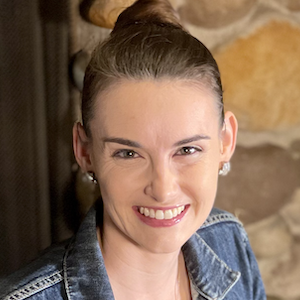After writing last week’s piece on negativity bias, I felt it important to address this question.
While kids need to put energy and intention into focusing on the positive to perform their best in school, I want to be clear that I am not advocating for toxic positivity.
Toxic positivity believes that people should maintain a positive mindset no matter what. And it can be harmful to kids who are struggling in school.
Here’s why that is and how kids can learn a healthier perspective to help them succeed in school.
Harms of Toxic Positivity
Think back to the last time you got some negative feedback at work, and one of your colleagues or friends told you to “just stay positive” or “look on the bright side.”
As well-intentioned as those comments may have been, they probably didn’t make you feel better.
Telling a student to focus on their strengths when they just failed another math test or forgot to turn in an assignment isn’t going to feel very good either. Not to mention that it would be entirely ineffective at bringing about any change.
Toxic positivity doesn’t work because:
- It’s shaming: Toxic positivity tells students that their emotions about their school struggles are unacceptable and need to be changed immediately. When students are suffering, they need to know that they can find relief and love in their friends, family, teachers, and coaches.
- It causes guilt: It sends a message that if students aren’t being positive, it’s one more thing they’re doing wrong, at a time when they already feel like a failure.
- It avoids authentic human emotion: Toxic positivity functions as an avoidance mechanism. Discounting, dismissing, or denying negative feelings about their school performance robs students of the opportunity to recognize an authentic problem and find a solution.
- It prevents growth: Only when students face their challenging feelings about school can they gain deeper insight into what is causing their struggles and grow through those struggles.
Thoughts Create Reality
While it’s important to avoid toxic positivity, we can’t deny that our thoughts create much of our reality, and a rosier outlook will lead to a more positive reality.
Let’s think about the example of a math test.
No student has control over what grade they get on this math test. They can influence their score by using their class and study time effectively or ineffectively. But the actual score they earn is not in their control.
What is in students’ control is what they think in response to their grades.
To illustrate, we’ll say that two students each earn a failing grade on this math test.
Student A thinks, “Ugh, I am so bad at math! I hate this class. I am just not a math person.”
Student B used to think that way but has now learned to think, “Ugh, I’m so disappointed in this test grade. I want to talk to my teacher to figure out what I did wrong so I can do better next time.”
I probably don’t have to point out how the immediate reality of each of these students will differ. One will get help with their math skills right away; the other won’t. But how these students’ thoughts will create their reality is even more serious than that immediate difference.
Our thoughts, if we think them over and over, and assign truth to them, become beliefs. Beliefs shape how we interpret the events that happen in our lives. They shape our self-concept.
A student’s self-concept is made up of beliefs about who they are presently and who they can be in the future. From these beliefs, students create stories and narratives about who they are. And they tell themselves and other people all day long.
“I am not good enough.”
“I cannot do it.”
“I am smart.”
“I can figure this out.”
“I can achieve my goals.”
Those are the realities that our students create for themselves.
Seeing the Positive in What is Real
Our math test example shows how students can feel their authentic feelings without getting mired in negativity.
When Student B thinks, “I want to talk to my teacher to figure out what I did wrong so I can do better next time,” they focus their thoughts on 1) the fact that they have a supportive teacher they can go to for help and 2) their optimism about the next math test, both positive thoughts.
They also acknowledge that they did not earn the grade they wanted and that they will have to take additional action to reach their goal in the future.
Both parts of the thought are necessary for success.
As you might guess, this is how we teach students to think at School Without Suffering.
Students learn basic neuroscience behind how their thoughts create their reality from the first week they’re with us. They acknowledged their authentic feelings about school and their capabilities as students. And they plan to think thoughts that will help change their performance in school.
They practice forming those thoughts with their coach as they work on their school work, taking action to make their study time more effective.
And before they know it, their reality in school has changed right along with their thoughts about it. Their grades are up, they feel better, have more energy, and are overall healthier happier kids.
No toxic positivity in sight.

Founder & Principal Academic Coach
Laura Fragomeni, Ed.M.
Laura Fragomeni is a Harvard-educated master academic coach and the founder of School Without Suffering, an academic coaching practice specializing in helping struggling students around the world be happy and successful.

